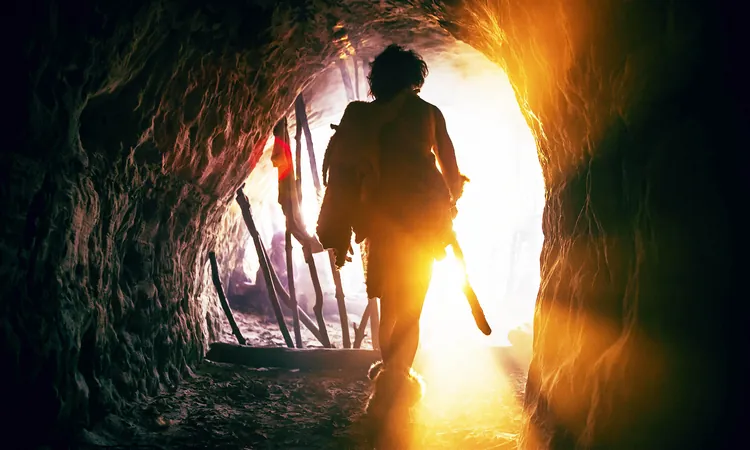
Unveiling Secrets of Early Humanity: Discoveries from Tam Pà Ling Cave in Southeast Asia
2024-10-24
Author: Nur
Tam Pà Ling, a remarkable cave hidden within the dense jungles of Southeast Asia, has become a treasure trove for understanding the complex history of early humans. While many look to the stars for answers regarding our origins, this underground site offers an intriguing glimpse into our past, revealing secrets that may shape the narrative of human evolution.
A Multinational Scientific Expedition
For over 14 years, a dedicated team of researchers, including experts from Laos, France, the United States, and Australia, has been tirelessly exploring the depths of Tam Pà Ling. Led by Ph.D. candidate Vito Hernandez and Associate Professor Mike Morley from Flinders University’s College of Humanities, Arts and Social Sciences, their innovative approach has led to groundbreaking discoveries.
Using a technique known as microstratigraphy, the team recreated environmental conditions from 52,000 to 10,000 years ago, shedding light on the cave's rich history. “Microstratigraphy allowed us to step back in time, revealing how human activities might have shaped the cave's environment,” Hernandez explained, providing crucial insights into the context surrounding the oldest modern human fossils in Southeast Asia.
Unraveling the Fossil Mystery
The human fossils discovered in the cave, dating back to between 86,000 and 30,000 years ago, pose many intriguing questions. The research team faced challenges in piecing together the conditions under which these remains were deposited. The cave has experienced significant environmental changes over millennia, alternating between temperate, rainy climates and drier seasons. “Changes in the cave’s environment influenced sediment deposition, including that of human fossils,” noted Associate Professor Morley.
Their analysis revealed that heavy rainfall likely washed loose sediments and human remains into the cave from nearby hillsides, solving an age-old mystery about the location of our ancestors' final resting place.
Evidence of Early Human Activity
Further investigation within Tam Pà Ling uncovered intriguing evidence of human presence, including micro-traces of charcoal and ash. These findings suggest that early human visitors may have used fire, whether for warmth, cooking, or signaling, potentially during periods of decreased forest cover. Such evidence has provided new perspectives on how our ancestors navigated and adapted to the shifting landscapes of Southeast Asia.
“This research has provided unprecedented insights into our ancestors’ behaviors and movements during times of significant climate instability,” said Assistant Professor Fabrice Demeter from the University of Copenhagen.
The Continuing Quest for Knowledge
The discoveries at Tam Pà Ling have not only shed light on the ancient past but have also reignited interest in Southeast Asia's critical role in human history. As the team paves the way for further exploration, they plan to employ advanced technologies, such as DNA analysis and isotopic studies, to gain even deeper insights into the lives of these early cave inhabitants.
Each layer unearthed in Tam Pà Ling serves as a living archive, drawing researchers closer to understanding not just how early humans adapted to their surroundings, but also how they managed to survive amid an ever-changing environment.
As studies continue, scientists remain hopeful that this extraordinary cave will yield new clues about the intricate story of humanity and the ways populations interacted with their evolving world.
The comprehensive findings of this fascinating study have been published in the journal *Quaternary Science Reviews*, igniting excitement within the scientific community and beyond.


 Brasil (PT)
Brasil (PT)
 Canada (EN)
Canada (EN)
 Chile (ES)
Chile (ES)
 España (ES)
España (ES)
 France (FR)
France (FR)
 Hong Kong (EN)
Hong Kong (EN)
 Italia (IT)
Italia (IT)
 日本 (JA)
日本 (JA)
 Magyarország (HU)
Magyarország (HU)
 Norge (NO)
Norge (NO)
 Polska (PL)
Polska (PL)
 Schweiz (DE)
Schweiz (DE)
 Singapore (EN)
Singapore (EN)
 Sverige (SV)
Sverige (SV)
 Suomi (FI)
Suomi (FI)
 Türkiye (TR)
Türkiye (TR)